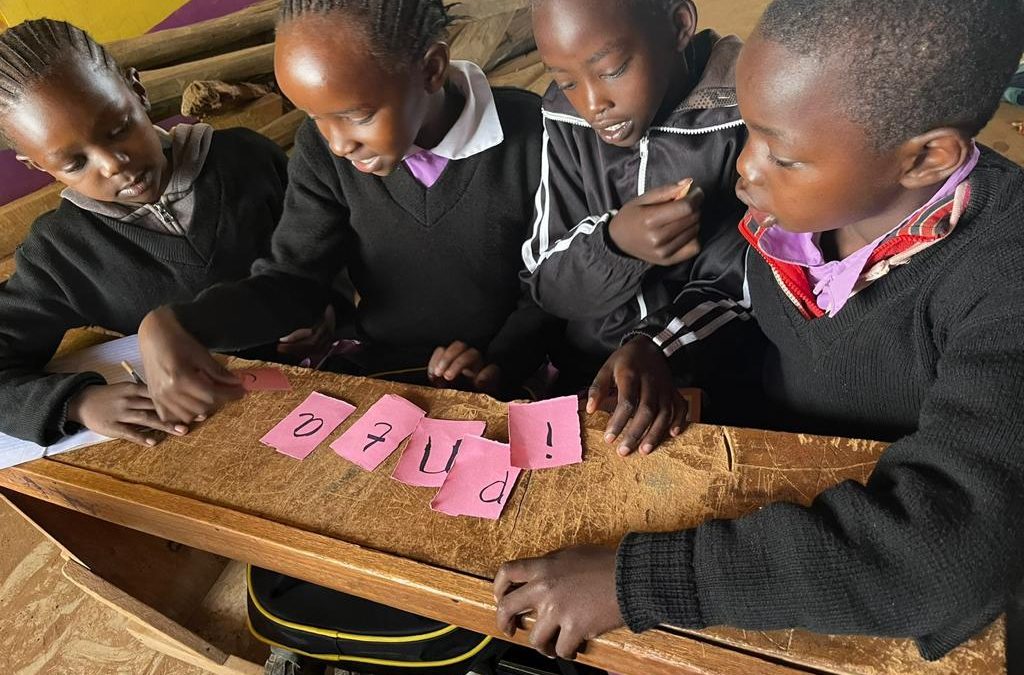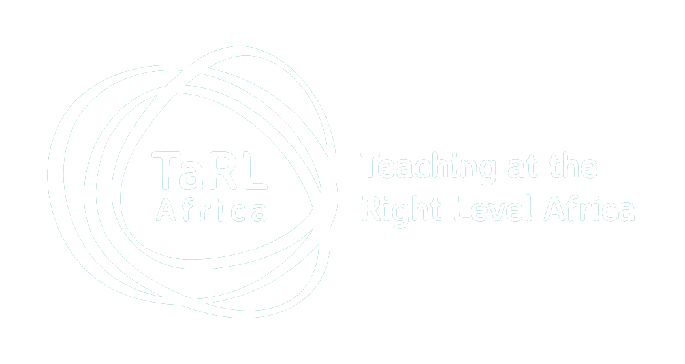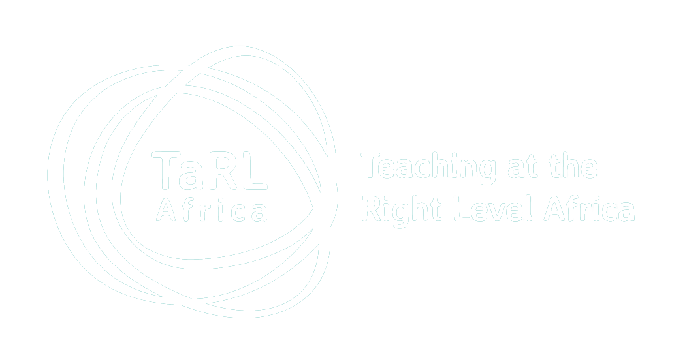
Children practice a TaRL reading activity with flashcards. Photo: Grassroots Nest for Innovation and Change (GRIC)
Through the contribution of the Hewlett Foundation, the TaRL Africa NGO innovation fund aims to support local non-governmental organizations (NGOs) to strengthen and scale up Teaching at the Right Level (TaRL) programming across Africa. The one-off fund provides a platform to explore innovative, locally grounded TaRL models that are more cost-effective for the context. So far, the fund has benefited five organizations from five different countries, namely Kenya, Namibia, Uganda, Botswana, and Cameroon. The first phase in February 2020 supported Youth Impact, then called Young 1ove in Botswana and YARID in Uganda. The current second phase has benefited three organizations: Grassroots Nest for Innovations and Change (GRiC) from Kenya, Meerkat Learning Academy Namibia, and Nkong Hill Top Association for Development (NADEV) from Cameroon. The fund hopes to strengthen the capacity of organizations to scale up TaRL through TaRL Africa’s central team support, including building leaders of practice who deeply understand the TaRL approach and innovating new locally grounded TaRL models.
Find out more about these organizations and how they will utilize the funds to implement and grow the TaRL approach:
Grassroots Nest for Innovations and Change (GRiC)
GRiC partners with grassroots organizations working with vulnerable communities in the informal settlements in Nairobi, and in pastoralist areas inhabited by the Maasai community in Kenya. Through the “Pamoja Twasoma” project, which in Swahili means “Together we are learning”, GRiC targets students in grades three to five within the remote Maasai pastoralist communities in Kajiado County, Kenya. GRiC will test the Language Learning from Familiar to Formal (L2F2). This methodology provides a roadmap that allows students to progressively learn the formal language of instruction using their local language. GRiC will pilot the use of a local language called Maa to introduce literacy skills, making it easier for learners to acquire skills in English. Find out more about GRiC here.
“Teaching at the Right Level is so important, because our learners who have been left behind are now catching up. TaRL is also a way of motivating the teachers because the activities used to teach learners are engaging,” said Patric Melenta, Curriculum Support officer, Kajiado- Kenya.
Meerkat Learning Academy Namibia
TaRL Namibia – Inclusive Education & Learning Support Integration project seeks to explore how TaRL can be scaled up nationally under the rollout of the ‘inclusive education policy’ to reach approximately 24,000 learners in 100 schools. The organization’s long-term vision is to expand the TaRL program countrywide through government partnership.
Nkong Hill Top Association for Development (NADEV)
NADEV works to improve the learning outcomes of children in the North West/ South West conflict regions of Cameroon. Through the “We Go Sabi” pilot project, NADEV will implement the TaRL approach to improve access to learning for 960 conflict-affected children by April 2023, who have missed out on up to five years of education as a result of conflict and school closures in the Fako Division, SW Cameroon. Find out more about NADEV her

